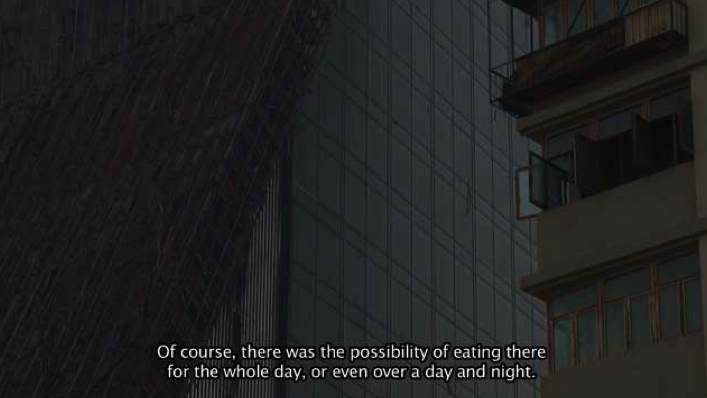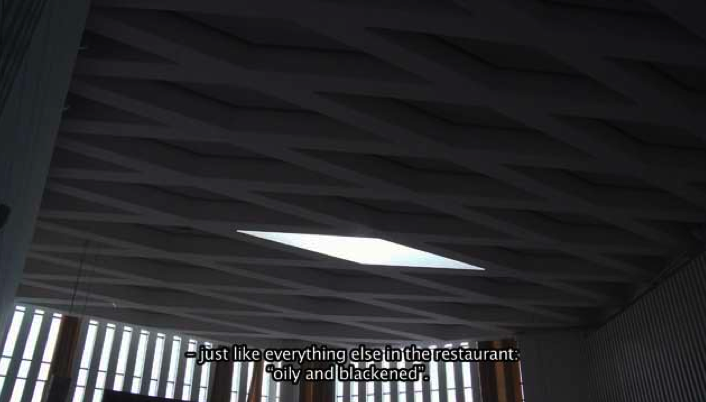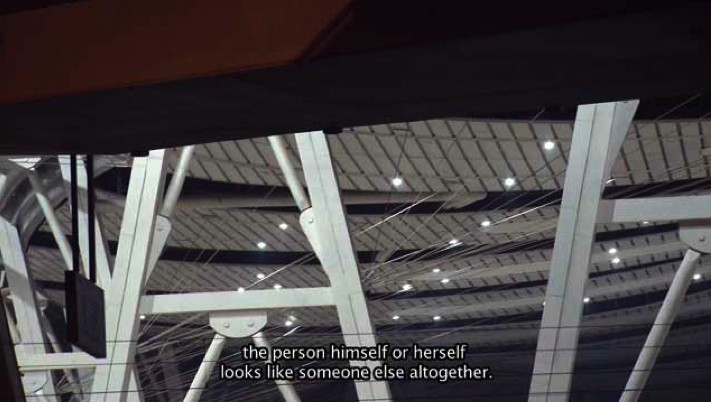Johann Neumeister - Gerkan, Scheeren, Speer

Johann Neumeister’s short film “Ger-kan, Scheeren, Speer“ (2009, HD-Vid-eo, 20 min.) explores the relationship between contemporary architecture and society in today’s China. At first glance the camera follows two young protagonists, Kate and Ricky, moving through the exhilarating scenery of Beijing, accompanied by a voice-over - Hun Fang reading the short story “Face People“ by the artist Chu Yun - and electronic music by the composer Wang Fan. The film is structured in three parts; the first and shortest one is showing only Kate in the morning, the second one Kate as well as Ricky in the afternoon, while the third and longest part only Ricky at night. The protagonists never meet or interact which each other and appear mute; they don’t speak. By contrast the non-chronological, repetitive narration of some sort of uncanny love story is being read to the viewer.
The overall coherence between text and image remains mysterious and open for interpretation. Between the lines the spectacular backdrop becomes the actual focus of the film. Precisely the lens is portraying three contemporary designs by European architects. Each architectural setting is given a part within the framework of the film: part one is showing the Christian Church by Meinhard von Gerkan (gmp Architekten), part two CCTV/TVCC by Ole Scheeren (OMA) and part three the North-South-Axis planned by Albert Speer, Jr. (AS&P). The predominant use of close-ups throughout the film prevents an overall outlook on the scenery and deconstructs idealized representations of architecture. The content, the inner life and the purpose of the depicted physical built up remain abstract. Beijings’s largely young population, such as Kate and Ricky, appear to rebound against the faceless structures they are surrounded by, being reduced to mere extras within a spectacle in which the buildings themselves and the powers they represent seem to play the leading part. The monumental and alluring constructions dominate its inhabitants passing through. Johann Neumeister transcends conventional cinematic language by avoiding predictable dramaturgy and blending fiction with documentary elements. The film refrains from dogmatic and apparent presentation of content thereby challenging the viewer with its audio-visual poetry. A dreamlike sequence is created capturing a day in a post-modern metropolitan city; an ambivalent homage to Beijing raising complex questions on architecture and humanity.


- Editor1's blog
- Login to post comments